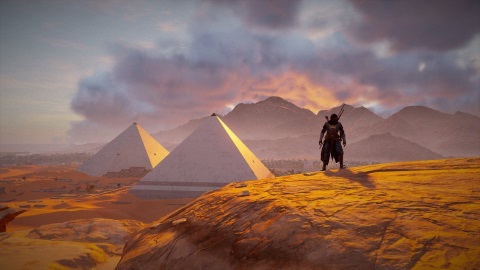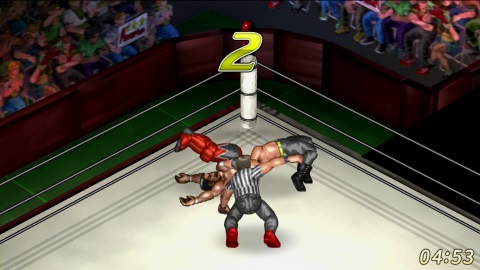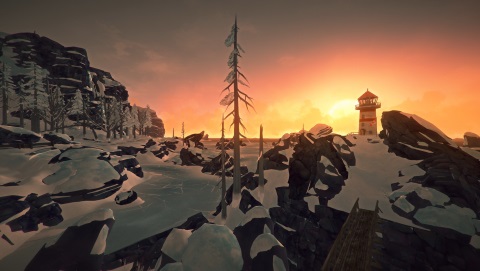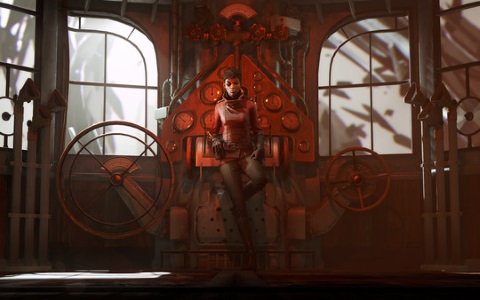Games of 2017
There were a lot of games released in 2017, so many that there are still probably 8-10 games that came out that I want to play that I haven’t gotten around to, and I probably never will get to some of them. Thankfully, many of the games that I did play turned out to be quite good.
These days the toughest question I have to deal with when putting out this list is figuring out what exactly constitutes a game that was “released” in 2017. On some level the days of going to a store and buying a disc or cartridge that contains the final version of a game is over. This list includes one game that’s still in Early Access, another game that was in EA for a couple of years but finally saw its official “release” this summer, and a game that was released episodically throughout 2016 but wasn’t put together as a complete retail package until January. Then there’s something like No Man’s Sky, which was so thoroughly changed through free DLC this year that it’s practically a new game. I didn’t include it since it was already my #2 game last year, but it’s an interesting question.
One big difference between this year and most other years I’ve done this list is that this year there aren’t nearly as many indie games. In previous years I’ve had games with small budgets but great ideas at or near the top of the list, with Game of the Year honours going to things like The Banner Saga or Papers, Please. I couldn’t say why that is, but for whatever reason this year’s list is dominated by games from big publishers.
I make no claim to having an exhaustive list of the “best” games of 2017. I counted about 25 games that I played enough of this year to form an opinion, but there are plenty more I haven’t played and would like to (I hear Yakuza 0 is a lot of fun), or games that I started and enjoyed but got distracted from before I could decide how much I liked them (like Thimbleweed Park). So these are just the ten games I got the most enjoyment out of this year.
10. Assassin’s Creed: Origins

Assassin’s Creed: Origins is the most Video Games video game of 2017. It’s a platformer with an RPG levelling system, combat at least vaguely inspired by Dark Souls, equipment divided into blue/yellow/purple coloured tiers in the way that World of Warcraft pioneered, a completely extraneous crafting system, quest design that seems to be trying to mimic The Witcher 3, fortresses that seem pulled from Far Cry, and an enormous open world that you can ride through on horseback. It seems determined to continually pull you out of the experience with reminders that this is software-as-a-service just as much as it’s a single-player game, that you can always spend more money, and maybe could you spend some more money?
And yet despite all that, there’s nothing in the game that is especially bad either. All of its components are competently executed (except the crafting, I think, which is just a lazily designed time sink). It is, on a technical level, extremely impressive. The sheer number of unique art assets in the game is absolutely staggering, virtually all of them at an impressive level of detail and quality. They’ve also fixed some of the problems that recent incarnations of Assassin’s Creed have had; for example, they finally got rid of the god forsaken instant fail stealth sections. And in general the moment-to-moment gameplay is pretty fun. It’s almost never a bad game, but it’s never really a great game either. It’s pretty good, but unremarkable. And there is just way, way, way too much of it, and it makes me sad that we’re never going to get a really clever, tightly focused Assassin’s Creed (like AC2) again.
9. Fire Pro Wrestling World

Fire Pro Wrestling is not a game that everyone, even every wrestling fan, will enjoy. It’s completely lacking in terms of presentation, has very few match types to choose from, and features no real wrestlers (though it’s got a great character creator and it’s easy to download real wrestlers that other people have created). It also has no story or career mode, although they are apparently planning to add one in January. What it is good at is being a game about wrestling matches.
One thing Fire Pro captures that other recent wrestling games haven’t is the flow of a match. Grapples are divided into weak, medium, and strong, and at the beginning of each match anything other than a weak grapple will be countered. After a couple of minutes of wearing an opponent down you can start to execute medium grapples, and a few minutes later you might be able to land a big move. Strikes follow this formula too: early on you’re unlikely to land a large strike like a clothesline or a dropkick, but a simple jab or chop is a lot easier to land. It even includes some of the fun little moments that wrestling matches often contain, like tests of strength and back-and-forth strike exchanges.
This means that every match has a real flow to it that roughly follows what you’d expect from a real (fake) wrestling match, with the early going being a back and forth of quick strikes, simple throws, and wear-down holds, progressing into bigger and more damaging moves, eventually building up to landing signature strikes and finishing moves. If you can put up with a game that doesn’t have a lot of bells and whistles but does have excellent in-ring action, this one’s worth picking up.
8. The Long Dark

The Long Dark is ostensibly a “survival” game, but it bears little in common with games like Don’t Starve that probably come to mind when someone mentions the genre. While The Long Dark does have hunger and thirst meters, as well as crafting, it’s actually a fairly gentle game once you get the hang of how it works. It’s relatively easy to have a single game that runs for several hours unless you stumble into a really unfortunate situation, like getting mauled by a bear.
Instead, The Long Dark is a much quieter and more contemplative game about trying to eke out an existence for yourself, alone in the frigid Canadian wilderness. I’m having a bit of difficulty describing what I particularly like about this game because it succeeds not in big moments, but in small ones. Walking up over the crest of a hill to find a cabin that will be safe and warm to sleep in overnight as the temperature drops. Trekking through a snow-covered, wind-swept valley in search of new horizons to uncover. Staring out at an aurora late at night (but not for too long, because you’ll freeze to death). Warming up with a mug of tea and a new pair of mittens. The Long Dark is a game that succeeds not as a series of challenges or systems to master, but as an experience of the feeling of particular place and circumstance.
7. Dead Cells

This is the first time I’ve included a game on one of my year end lists that isn’t even finished yet (it’s still in Early Access), but Dead Cells is already a well-tuned game with a lot of content to play through. It bills itself as a Metroidvania, but I think it’s better to think of it simply as an action-platformer that happens to have randomly generated levels. It’s a game that feels great to get better at, to push yourself to reach new levels and progress further along. The moment-to-moment combat is incredibly satisfying, with a wide variety of weapons to use, each of which handles differently and has different attributes. At this point the game seems to be largely feature-complete, with the major changes being new content and balance fixes. I’m looking forward to seeing where the developers take it.
If you want a bit more detail about what makes Dead Cells great, Rock Paper Shotgun just named it their Game of the Year, and they’ve got a good write-up about it.
6. Horizon: Zero Dawn

Horizon: Zero Dawn was the best photography simulator I played in 2017. It has absolutely gorgeous environments and a great photo mode, which I used to take something like 200 screenshots (the above image is one I took, and I shared some of my other favourites here). As a game H:ZD is a bit more of a mixed bag. I thoroughly enjoyed the combat mechanics – taking on the robotic dinosaurs that also happen to comprise the game’s central narrative mystery is great fun. And thankfully that excellent combat is the primary thing you’ll be doing in the game. It’s also a joy to explore the world, thanks to the great environments.
But it also suffers from many of the same problems that Assassin’s Creed Origins does, in that it is a very Video Games video game. There’s a lot of extraneous fluff that distracts from the parts of the game that I enjoyed the most. It’s way too big, it offers too many pointless quests, it has a needlessly complicated item system, throws in a largely unneccessary crafting system, and so forth. The writing is also not particularly good, and for the love of God, please stop using audio logs to deliver narrative.
Thankfully, the things Horizon does well it does very well, and so it was a game I had a lot of fun playing, even though it would have been better if it was more focused and about 10 hours shorter.
5. Dishonored: Death Of The Outsider

Death of the Outsider is the expansion/sequel to a game that I think is criminally under-rated, Dishonored 2 (I had D2 as my 3rd best game of 2016, and the only reason it wasn’t higher is because two of my favourite games of the past decade also happened to be released last year). Death of the Outsider takes place in the same world, even borrowing a couple of levels, and it’s more of what Dishonored 2 was so great at. It creates a series of interlocking systems and open-ended quests that really reward you for exploring, experimenting, and understanding how the game world functions. Here’s a story of something that happened to me while playing that highlights why I like this game so much:
There’s a bar where the members of a gang hang out. I’d managed to get myself into the bar, but in the course of completing a side-objective I’d alerted someone in the gang that I was up to no good, and they began trying to attack me. With nowhere to hide, I sprinted down the stairs to the main floor and flew out the front door. As I went, the number of gangsters chasing me increased. They followed me outside. Well, as it happens, outside of the club there’s a checkpoint manned by the city guard. The city guard and the gangsters were enemies, so the guards attacked the gangsters on sight, giving me room to escape, and starting a big fight between the two AI factions.
Now, that’s pretty cool on its own, but the real fun happened later. There’s another side quest that has you tail a gang member from another part of town to find out who they’re working for. So I’m darting across rooftops, trying to figure out where the gangster is going, when she walks into the intersection where the city guard and the gangsters have been fighting. The guards realise that she’s part of the gang they’re fighting with and attack her on sight, killing her, and causing me to fail my mission.
Now, this might sound bad – after all, I’d lost the ability to complete a side quest. But the way the game’s systems came together to produce a coherent, emergent narrative was so great, and it’s a perfect example of why I enjoy Dishonored 2 and Death of the Outsider so much.
4. Super Mario Odyssey

Patrick Klepek of Waypoint described Super Mario Odyssey as “a fever dream of creativity and pure joy” and that’s about as perfect a description of the game as I can think of. No game that I played in 2017, or perhaps in any recent year, made me smile as often as Mario Odyssey. People who are seriously into video games often view the height of the art form as the ability to make players cry. But I think making people sad is easy. What’s harder and more rewarding is joy, and Mario Odyssey is a game that channels every element, from its animations to its mechanics, from its sound to its structure, into joy.
If Mario Odyssey was just a game with a fun world and silly animations it would still be a good game, but it’s so much more than that. It’s a fantastic platformer, taking the formula Nintendo invented with Mario 64 and expanding upon it in some clever and inspired ways. It has a philosophy that is opposed to most big budget games in that it is absolutely packed with fun things to do. There is no filler, no unneccessary systems, no wasted time. It’s hard to run 10 feet in Mario Odyssey without finding something fun to do, some new power moon to uncover, some new test of Mario’s abilities to conquer. It follows the pattern of most recent Mario games in that almost any player could complete the main story and defeat Bowser, but there are so many optional challenges available that players of any skill level can find something compelling to keep them occupied. It’s also filled to the brim with great surprises (the twist in the moon level is a personal favourite).
I’m typically most enamored of video games with coherent worlds and compelling systems, which is why there are still three games ahead on this list, but I can easily say this for Super Mario Odyssey – it’s the game released in 2017 that made me the happiest.
3. Hitman

The Hitman episodic game was released in six parts over the course of 2016, but it wasn’t put together as a full retail package until 2017, and I didn’t play it until then, so I think it qualifies for this list. It may be surprising to see this game so high up on my list, but I’m definitely not the only one who loved it – Giant Bomb named it their Game of the Year last year. But what makes it so great? I’ll repeat what I said about Dishonored 2: “It creates a series of interlocking systems and open-ended quests that really reward you for exploring, experimenting, and understanding how the game world functions.”
Each episode in Hitman tasks you with assassinating somewhere between one to four characters who are going about their day-to-day lives across the fairly large levels. Two of the episodes also ask the player to complete one additional objective, and the second episode (Sapienza, the one pictured above) is my favourite. Each episode features a large, complicated location like an Italian villa or a luxury hotel in Thailand, and they’re full of people doing fairly normal things on fairly normal schedules. Some of those people are clearly related to the central quest, like security guards in the hotel, while others are merely there to make the environments feel more alive, like shopkeepers in Sapienza.
The fun comes primarily from two things. The first is figuring out how to reach the target(s), since they’re never just wandering down an abandoned alley where you can assassinate them with ease. Usually this will involve some combination of sneaking as well as disguises – the best way to describe Hitman is as a “social stealth” game where you’re trying to hide in plain sight. The second element that the game draws its fun from is the enormous variety of ways to interact with the world and characters. Each episode can be completed in a huge number of ways, and replaying the levels to try out different tactics is always a lot of fun. And once you’ve mastered each episode’s story campaign, there is a bunch of optional side content, like “elusive targets” with their own mini-stories that you only get once chance to complete.
Like Dishonored 2, Hitman succeeds at setting up a toybox and letting the player create their own kind of havoc inside of it.
2. Persona 5

I went back and forth between the top two games on this list a number of times. When Persona 5 is good, it’s really good. Most of my favourite games are turn-based role playing games, but it’s pretty rare to see a turn-based RPG released these days that isn’t a low-budget indie game (like The Banner Saga or Darkest Dungeon). The easiest way to describe the Persona games is that they’re like Pokemon with demons instead of cute animals, and also when you’re not delving into dungeons you play as a regular high school student doing regular high school things, like trying to deepen your friendships or spend more time with that cute girl who’s teaching you to play shogi.
Persona 5 has the best dungeon designs in the series, with each level having a great visual motif. In fact, the whole game looks outstanding, with what is possibly the best user interface design I’ve seen in a game. Everything in the game fits together, from the fonts used in the menus, to the music, to the level design, and so much more. The story also touches on some surprisingly difficult material for video games, like sexual harassment, and while Persona doesn’t always stick the landing, it does more often than not. It’s essentially a game about how rotten adults can be towards teenagers, and it’s pretty insightful about how little power teenagers really have and how easy it can be for adults to take advantage of that.
The main reason this isn’t my #1 game is that it is just too damn long. Persona 5 tells a single linear story, and that story can take something like 80-100 hours to complete. I still haven’t finished it (I’m about 2/3 of the way through). A lot of the content is just unneccessary. I can’t tell you how many times I had to sit through essentially the following conversation (dozens of times, easily):
teenager 1: we haven’t solved the problem yet!
teenager 2: i’m getting really worried we haven’t solved the problem!
teenager 3: guys, we’re going to solve the problem!
teenager 2: but what if we don’t solve the problem?
teenager 1: time is running out, we better solve the problem soon!
My other issue with the game is that it has a save system ripped out of 1994. When you’re inside the dungeons you can only save in specified “safe rooms”, and those are generally about half an hour apart. If the main character is knocked out in a battle, it’s an immediate game over, so if you walk into a battle with a new enemy and you’ve got the wrong elemental affinity, it’s easy to lose 15-20 minutes of progress with no recourse. There’s just no reason for a game released in 2017 to have this problem.
So Persona 5 is great, but flawed. If it was about 50% shorter it would have been my Game of the Year. Chrono Trigger was about 20 hours long. Final Fantasy 7 took about 35 hours. You don’t need three times that long to tell a good story.
1. The Legend of Zelda: Breath of the Wild

Breath of the Wild seems to be everybody’s Game of the Year, so it’s probably no surprise that it’s also mine. I like it for the same reasons I like Dishonored and Hitman: it’s constructed from a coherent system of rules which combine in fun, often unexpected ways. If something should be able to catch fire, it can catch fire. If something should be affected by wind, it’s affected by wind. If something is metal, you can push or pull it with magnets. The systems go even further than many other similar games; for example, you can drop raw meat into a cooking pot to heat it up, making it better at improving health. But if you kill an enemy on a volcano, and the meat drops on the surface of the volcano, it cooks immediately. But you’ve got to be careful, because being on a surface as hot as a volcano is also dangerous for Link, the player character. Thankfully, the game gives you a variety of ways to deal with these situations, all of which make perfect sense systemically. For example, one way to stay warm when you’re high up on a cold mountain is to change into warmer clothes and eat a hot curry. But another way, which became my preferred way, is to simply equip a giant flaming sword. The heat from the sword keeps your body temperature up.
One of my favourite things to do in games is to just explore, and this is another area where Breath of the Wild excels. Ever since The Elder Scrolls: Oblivion was released, the idea that “if you can see a mountain off in the distance you can climb it” has been a staple in open world games, but Breath of the Wild adds one simple mechanic that makes this idea better than ever: you can climb virtually any surface in the game. You’re limited by a stamina meter, and extending the stamina meter so you can climb to increasingly inaccessible areas is one of the great joys of the game. More than anything else I played this year, Breath of the Wild makes it fun to just wander around and see what you can find.
I do wish it had proper Zelda dungeons, though.

